
Anyone who writes regularly, can relate to this - It takes a lot of time and effort just coming up with the right topics. Then on top of that you have to actually write it, and rewrite it, and rewrite it some more.
As a content creator, you don’t just write for one channel, most likely you write for multiple channels - like a blog, newsletter, social media.
There are a few goals you should try to achieve with anything you write:
1 - Don’t be boring
2 - Teach the reader something they may not know
3 - Leave an impression that causes readers to feel like they have to respond or react
Because of these goals (really, they’re my rules for writing engaging content), there are days where you may struggle to come up with content ideas.
Then when you do have an idea, it may take you a few hours to write one piece of content.
But if there was a way to make writing content quicker and easier while still producing super engaging content, you’d be all for it - right.
That’s where repurposing content comes into play.
In this blog (which by the way was repurposed from a newsletter), you’ll discover 10 amazing ways to repurpose your content. Plus I’ll share some examples of ways I’ve repurposed my content for higher engagement.
Repurpose email into a new blog
I used to look at my newsletter content and blog content as two different strategies. Until I wrote this email back in May. It was about how to grow your business with more and better reviews.

I thought it would make a great blog post, so I did some keyword research (which I do for all my blog posts) and found there was a good search volume for “how to get Google reviews”.
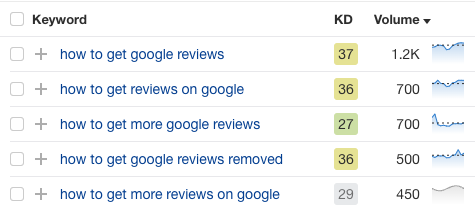
To repurpose the content to a blog I needed to add some more supporting content, but the core story was there. Check it out for yourself: How to get Google reviews: A step-by-step guide to boosting your sales.

Repurpose blog content for a social post
This is the easiest way to repurpose content, just pull one important nugget of information from your blog and make it a social post. Include the blog post URL to help drive more traffic to your blog content.
In this example, I repurposed content from a blog post on the “best fonts for emails” and turned it into a Twitter post by highlighting the top ways to choose an email font. Plus I added a graphic showing the top fonts. By adding the URL (as a bitly link) I was able to drive additional traffic to the blog post.
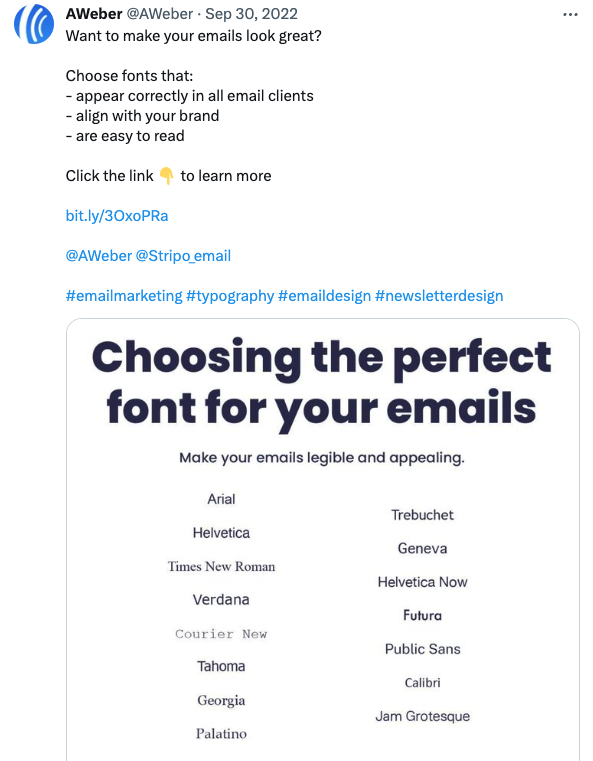
Repurpose blog content for a Thread
Or you can summarize the key points of your blog with a Twitter Thread.
Here’s an example of a blog post on “how to grow your email list using YouTube” that I turned into a Twitter Thread.
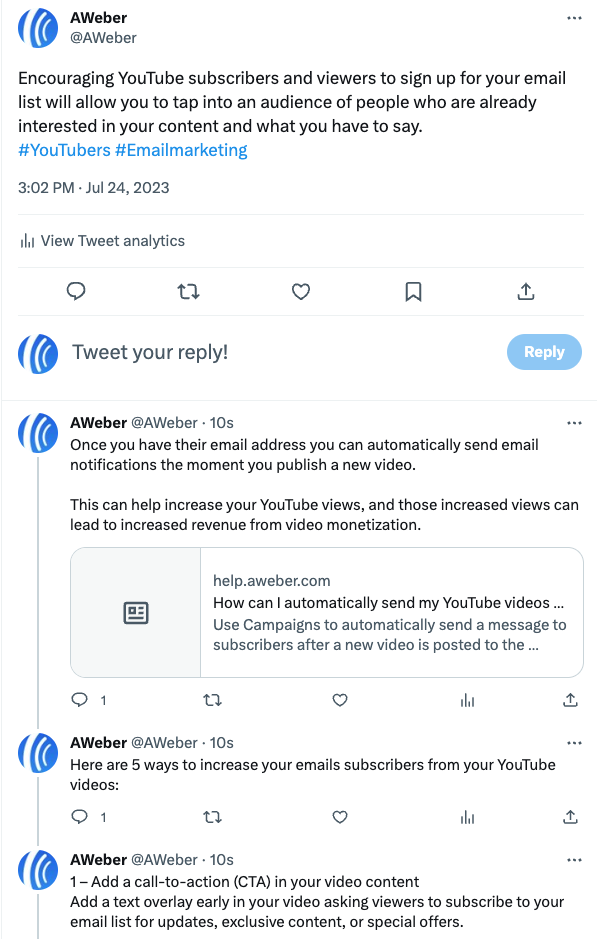
Make your newsletter a social post
I took this newsletter where we talked about the new social platform Threads and turned it into an Instagram Reel, which took Chelsea (you’ll see her in the video) 5 minutes to make.
Then I added the archive of the newsletter (also called a Newsletter Hub) so anyone, even if they weren’t on our email list, could read it.
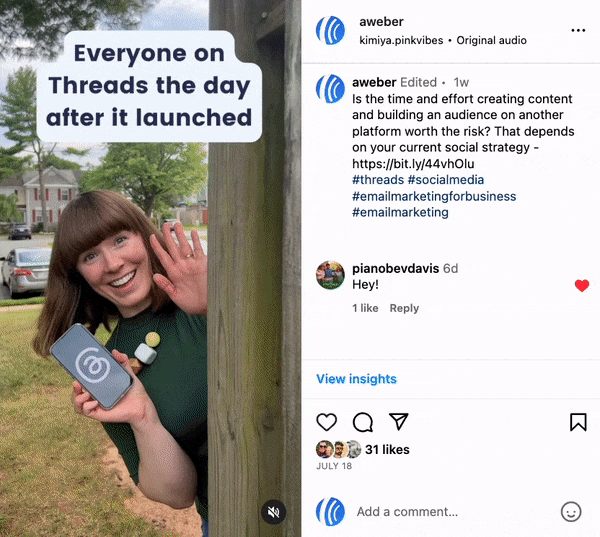
Did you know that all AWeber accounts come equipped with your very own Newsletter Hub - here’s how you can find it.
Turn a blog into email content
Take that blog you just created or some of your most popular posts and turn it into an email newsletter.
You have several quick and easy options for turning your blogs into newsletter content (especially if you have an AWeber account).
Option 1: Use the feed element
In AWeber accounts there is a “feed” element in the drag & drop builder. Pull the feed element into your email, then add your blog URL and your most recent blog posts are automatically added to your email.
You can show the image, title, description, author, and date for each blog.
The feed element can also be used for YouTube videos and podcasts.
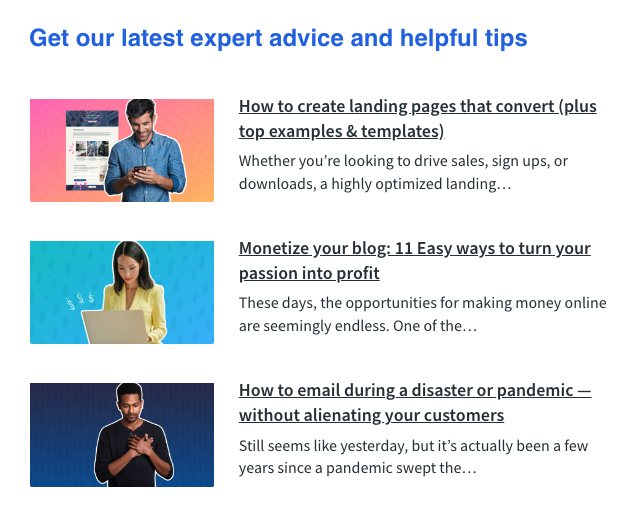
Option 2: Ask AWeber’s AI Writing Assistant to summarize your blog
When you write a long form piece of content, it can be challenging to then repurpose it into a short form content such as a newsletter.
That’s when you can ask AI to summarize your blog.
AWeber has an AI writing assistant feature built directly into the email message builder. Just open up the prompt and ask AI to summarize your post.
Here’s a good prompt you can use to ensure the same quality is produced:
Summarize this blog post [blog url]. Write it in the same tone and voice as the blog post. Keep the word count to under [include how many words you want the newsletter to be] words.
I used this prompt in the video below and the results were amazing.
Repurpose a newsletter for a YouTube video
Once your content’s written, you essentially have an outline for a YouTube video. Now it’s time to share your expertise in a video.
In this example, I took the newsletter about Threads that we already repurposed for social media and had one of my colleagues create a YouTube video.
This gives us even more ways we can use that one piece of content for several different channels.
Repurpose a blog for a YouTube video
Creating a YouTube video from existing content isn’t just limited to newsletters. Blog posts also make great content for videos.
Here’s an example of a blog post (Email design tips: A guide for non-designers) that we repurposed into a YouTube video.
Since blog posts tend to be a longer form of content, you don’t want to read it verbatim. Instead break your blog post out into sections where you can talk about key points of your post.
Repurpose content into a lead magnet
You have all this amazing content in your blog, YouTube videos, your newsletter, and possibly social media that you can bundle together to create a lead magnet.
Start with content that is driving the most traffic, this is a good indicator that’s a popular topic.
Here’s an example of a lead magnet that AWeber partnered with Litmus on. The overall theme of the lead magnet was writing better emails. Our portion was to educate readers on the different types of copywriting formulas that could be used to write better emails. We pulled the content from this blog post titled “The 3 best copywriting formulas for email marketing.”
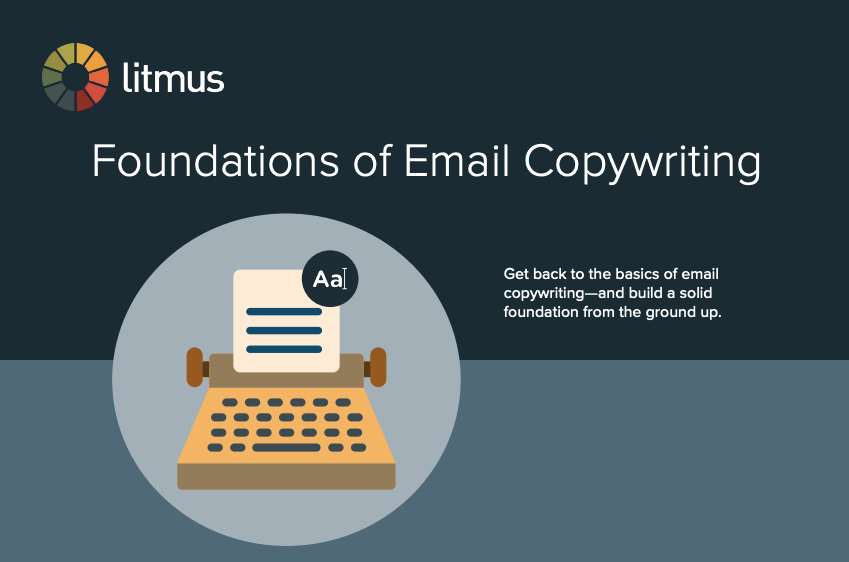
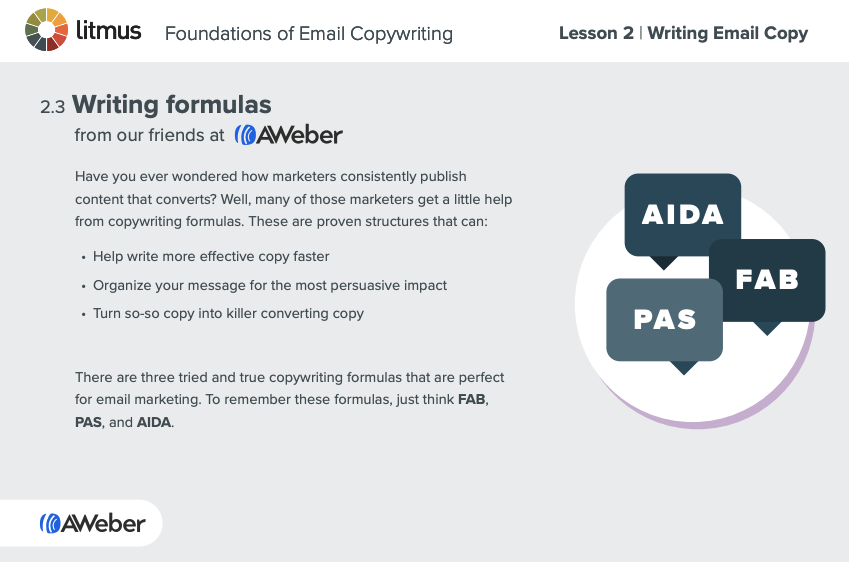
Repurpose content into a course
Creating an online course is a fantastic way to monetize your content. Plus when using existing content from a blog post, creating this course can be a pretty quick and easy effort.
To create value for your online course, it's important to complement your existing blog content with supplementary materials. These could be slideshow presentations, engaging videos, infographics, templates, and other support resources that cater to diverse learning preferences.
Thankfully, user-friendly platforms like Teachable and Thinkific make the entire process of creating an online course really easy.
Here’s an example of a course we created in Thinkific. The course, "24/7 Email Marketing Masterclass," was created using some content from our blog and other supporting materials.
Drawing on the wealth of expert insights available from our content, we curated a remarkable learning experience that resonates with our users and helps them become better email marketers.
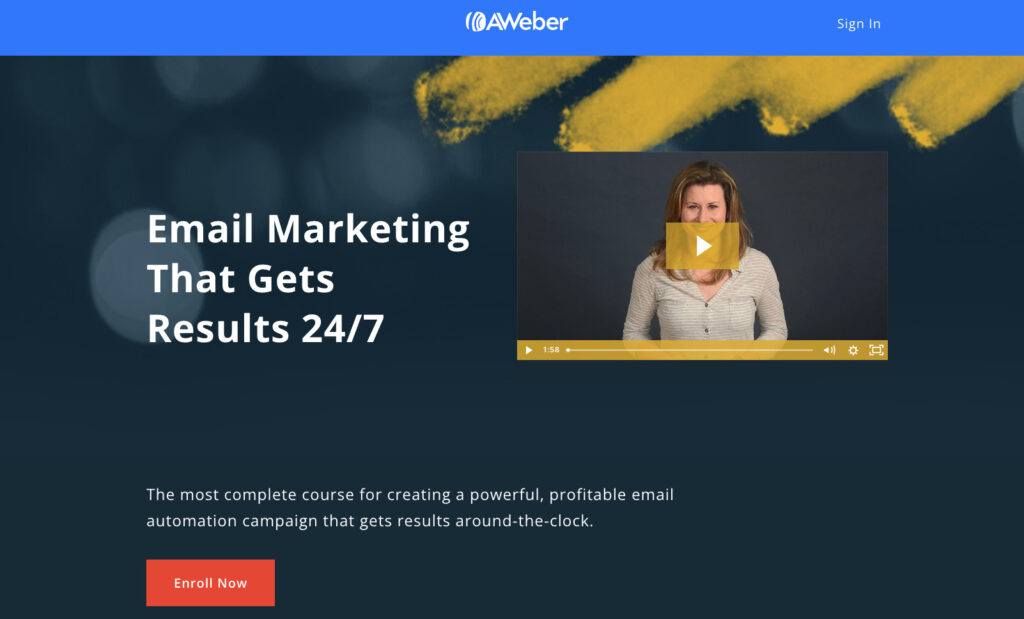
Repurpose content for a podcast episode
Looking ideas for a podcast episode? Look no further than your existing content. Newsletter and blog content make great topics for a podcast.
The best part is you essentially have an indicator on how popular that content will be by looking at your email opens and clicks or blog traffic.
AWeber created a series of podcast episodes based solely on the content from this Ultimate Guide to Email Marketing.
Here’s an example of one of those podcast episodes:
Your turn
Repurposing content is not a new, revolutionary strategy. It’s actually a very strategic part of a well-rounded marketing plan. But you’d be surprised how many great content writers don’t apply this strategy. Me included, until recently.
So if you haven’t started repurposing your content, no time like the present to start. If you have been, let me know what tactics you use.
The post 10 Innovative ways to repurpose your content + real-life examples appeared first on AWeber.
from AWeber https://ift.tt/eRyvIud
via IFTTT
No comments:
Post a Comment